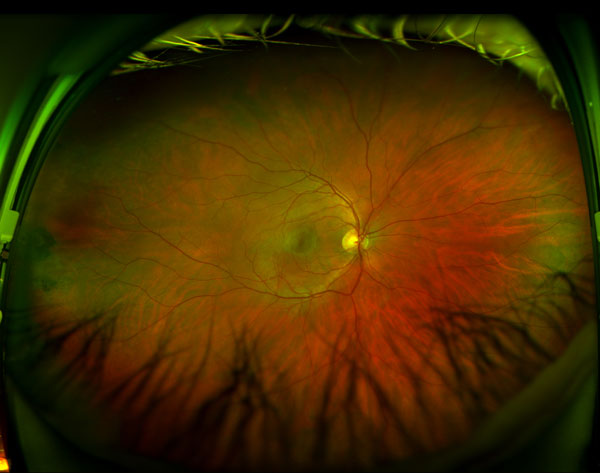There is always some new and interesting being developed in the vision and eye field, things from new testing to treatments. As a technician, I am always interested in the new innovations and how they can be used in my office. (I do not work for the companies that make the products that I am discussing nor am I compensated in any way.) One of the new items I am most intrigued by now is Simbrinza; a new treatment for glaucoma. The second is the Optomap; a quick and easy fundus camera.
Lets talk about Simbrinza, it is a combination of brinzolmide 1% and brimonidine tartrate 0.2%. These are two well-known treatments for lowering eye pressure. In combination they have been working amazingly well. It is used three times a day and can be used in combination with other drugs, such as the much loved prostaglandin drugs. There is a possibility of common side effects like blurred vision, eye irritation, dry mouth, bad taste in mouth—but what ophthalmic drop doesn't? We have tried this drug in the office with a handful of patients and have found that it can decrease IOP's up to 5 points. That is pretty impressive. There is a draw-back—COST. For a 30 day supply in the metro Atlanta area price is around $135 out of pocket. There are no generics, of course, it's a new drug. So there may only be a few that can afford this drug.


Both images generated by Optomap during an exam.
Now, to the Optomap. This is a quick and easy fundus camera. It takes a panoramic digital image of the retina with a scanning laser technology. It takes less than a few seconds to take the photos and it can show the doctor approximately 80 percent of the fundus, even without dilation drops. The images are immediate and it is an easy and painless test so all ages can have this test. Why is that important? We all know early detection is key, especially for eye diseases. This test is generally not covered by most vision insurances, but may be covered under some medical insurance plans. Generally the out of pocket fee is relatively low at $35 to $45. Most people will pay that to avoid dilation. However, there are some circumstances where dilation is still the best way to do a fundus exam. But, the Optomap takes amazing images. It is also a great way to discuss a patient's eye problems. Discussing eye diseases and conditions can sometimes be difficult. A picture is worth a thousand words. This can lessen chair time and it is also very impressive to the patient. The Optomap can be purchased or rented, which is often the main draw-back for the doctor. It is very easy to train staff on the use of the machine. The compensation for this test and the peace of mind for the ocular heath of the patients in less time is well worth it.
As in all fields, technology is ever changing. There are new and exciting innovations on the horizon. Keep yourself up to date and make sure that you do your research on the pros and cons of the different things available—for your sake and the sake of your patients.

Linda Hardy is a Certified Optometric Technician and Certified Ophthalmic Assistant. She is also ABO certified and NCLE certified and a Licensed Dispensing Optician in the state of Georgia. She has been with a private optometry practice in Newnan, Georgia for 15 years as the clinical coordinator.
Linda graduated from Georgia Medical Institute as a Registered/Certified Medical Assistant in April 1996. She began working with a group of ophthalmologists as an ophthalmic assistant. She switched her career to optometry in 1999. She has had the opportunity to become knowledgeable in many areas of the eye field from assisting to opticianry.













